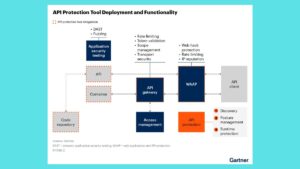Improving the Employee Experience: Strategies for a Thriving Workplace

In today’s competitive business landscape, the employee experience has become a crucial factor for organizational success. A positive employee experience not only enhances job satisfaction but also drives productivity, fosters loyalty, and ultimately contributes to a company’s bottom line. In this blog, we’ll explore key strategies for improving the employee experience, and creating a workplace that values, engages, and inspires its employees.
Understanding the Employee Experience
The employee experience encompasses all interactions an employee has with their organization, from the initial recruitment process to their daily work environment and career development opportunities. It includes:
- Onboarding: The first impression a new employee receives about the organization.
- Work Environment: The physical and virtual spaces where employees perform their tasks.
- Career Development: Opportunities for learning, growth, and advancement within the company.
- Company Culture: The shared values, beliefs, and behaviors that shape the workplace environment.
- Feedback and Recognition: The systems in place for employees to provide feedback and be recognized for their contributions.
A positive employee experience can lead to higher engagement, improved retention rates, and better overall performance.
Key Strategies to Improve the Employee Experience
1. Enhance Onboarding Processes
The onboarding process sets the tone for the employee experience. A well-structured onboarding program can help new hires acclimate to the company culture, understand their roles, and build relationships with colleagues.
- Personalized Welcome: Create personalized onboarding experiences that cater to individual needs and roles.
- Mentorship Programs: Pair new employees with mentors who can guide them through their initial weeks and provide support.
- Comprehensive Training: Offer thorough training sessions that cover not only job-specific skills but also company values and culture.
2. Foster a Positive Work Environment
Creating a positive work environment is essential for employee satisfaction and well-being. This includes both physical and virtual spaces.
- Flexible Work Options: Provide options for remote work or flexible hours to accommodate employees’ personal needs and preferences.
- Wellness Initiatives: Implement wellness programs that promote physical and mental health, such as gym memberships, mindfulness sessions, or mental health days.
- Collaborative Spaces: Design office spaces that encourage collaboration and communication among employees.
3. Invest in Employee Development
Continuous learning and development opportunities are critical for keeping employees engaged and motivated.
- Training and Workshops: Offer regular training sessions and workshops that allow employees to develop new skills relevant to their roles.
- Career Pathing: Provide clear career paths and growth opportunities, helping employees understand how they can advance within the organization.
- Tuition Reimbursement: Consider offering tuition reimbursement for employees pursuing further education, demonstrating a commitment to their professional growth.
4. Cultivate a Strong Company Culture
A strong company culture is essential for fostering employee engagement and loyalty.
- Define Core Values: Clearly define and communicate your company’s core values, ensuring that they resonate throughout the organization.
- Encourage Open Communication: Foster a culture of transparency by encouraging open communication and feedback at all levels.
- Celebrate Diversity and Inclusion: Create initiatives that promote diversity, equity, and inclusion, ensuring that every employee feels valued and respected.
5. Implement Effective Feedback Mechanisms
Regular feedback is crucial for employee growth and engagement. Organizations should have systems in place to facilitate constructive feedback.
- Pulse Surveys: Conduct regular pulse surveys to gauge employee satisfaction and gather feedback on various aspects of the workplace.
- One-on-One Meetings: Encourage managers to hold regular one-on-one meetings with their team members to discuss performance, concerns, and aspirations.
- Recognition Programs: Implement recognition programs that celebrate employee achievements and contributions, fostering a culture of appreciation.
6. Leverage Technology for Enhanced Engagement
Technology plays a vital role in improving the employee experience.
- Employee Engagement Software: Utilize software that enables real-time feedback, recognition, and communication among employees.
- Collaboration Tools: Invest in collaboration tools that facilitate communication and teamwork, especially for remote teams.
- Learning Management Systems (LMS): Use LMS platforms to offer training and development programs that employees can access at their convenience.
Measuring Employee Experience Improvements
To determine the effectiveness of your initiatives, it’s essential to measure improvements in the employee experience. Consider the following metrics:
- Employee Engagement Surveys: Regularly assess employee engagement levels through surveys, tracking changes over time.
- Turnover Rates: Monitor turnover rates to gauge employee retention and satisfaction.
- Performance Metrics: Analyze productivity and performance metrics to assess the impact of improved employee experiences.
Conclusion
Improving the employee experience is not just a trend; it is a necessity for organizations looking to thrive in today’s competitive landscape. By enhancing onboarding processes, fostering a positive work environment, investing in employee development, cultivating a strong company culture, implementing effective feedback mechanisms, and leveraging technology, organizations can create a workplace that values and engages its employees.
As companies prioritize the employee experience, they will not only attract and retain top talent but also create a motivated and productive workforce. In an era where employees seek purpose and connection, organizations that invest in their employees’ experiences will reap the benefits of loyalty, innovation, and long-term success. Embracing these strategies will ensure that the organization remains a preferred employer and a leader in its industry.






